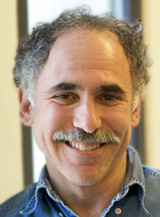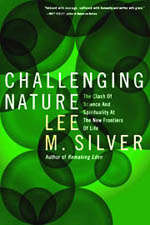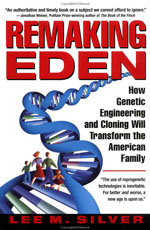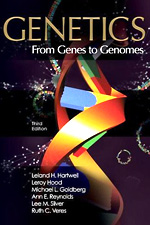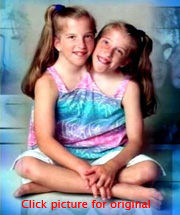|
published by Ecco/Harper Collins, 2006
|
|
Books
Presentations
Publications/Writings
Biography
Princeton Courses
|
I thank my colleagues Patrick
Lee and Robert George for the time and effort
that they put into reading and critiquing my recently published book, Challenging
Nature. Since I present a lengthy discussion of -- and challenges
to -- their previously published views in the first half of my book, I
was not surprised that they found much to criticize there. I am
disappointed that they had nothing to say about the second half of my book,
where I direct my fire at "New Age secularists [who] rail against
genetically modified crops." I suspect that many NRO readers
will find much to agree with in this portion of my writing (which elicited
an enraged review in the American Scientist from the post-modern historian
Nathaniel Comfort). Further reading
Before I respond to the main points of disagreement, I want readers to
know that I wrote about leaders of the Catholic Church in the U.S.
with the utmost respect. In describing my meeting with bishops who
sit on the Committee on Science and Human Values of the U.S. Conference
of Catholic Bishops, I wrote, "At the outset, I was impressed by their
genuine inquisitiveness, their desire to understand the most recent advances
in science, and their willingness to admit that important questions existed
for which they had no answer." As I have written, the thrust
of my challenge to Lee and George was on scientific grounds, not theological
ones.
Professors Lee and George think that human embryos are undisputedly human
beings. Millions of other people brought up in the Western religious
tradition hold the same view, but what sets Lee and George apart is their
claim that the "scientific facts" alone prove that human embryos
are human beings. Lee and George have read and heard challenges to
their claim by scientists, writers, theologians, and other academics. Most
notable are the able arguments
presented by Ron Bailey in a previous NRO
debate. But Lee and George haven't budged, and I doubt there is
anything I can say or write that will ever make them budge. My
perception of their attitude should make scientists suspicious because
it suggests that Lee and George cannot conceive of an empirical experiment
(with results that can be objectively verified) that would falsify their
claim. If this is true, their claim is not a scientific one. If
they've got an experiment, I'd like to hear the operational details.
Lee and George base their embryo-is-a-human-being claim mainly on two
propositions. One is that a human embryo has an "internal active
disposition for self-directed development toward the mature stage of a
human." Since we know that a single cell can separate from
a 4-cell embryo and develop into a separate human baby (on rare natural
occasions), Lee and George would argue that this cell has the "internal
active disposition" that makes it a human being. On the
other hand, they argue that isolated embryonic stem (ES) cells are not
human beings because they do not have this "internal active disposition." But "internal
active disposition" is not a term that has any meaning in the context
of cellular or molecular biology. If George and Lee want to claim
otherwise, I'd like to know their perception of the molecular attributes
that distinguish human being-cells from non-human-being, yet still fully
viable and human, cells.
Those of us who have worked only with early-stage mouse embryos (which
are essentially identical in size and appearance to human embryos) don't
have the same qualms as colleagues in the human stem cell field do when
it comes to speaking honestly about the relationship of embryos to stem
cells. In the summary of a meeting of mouse geneticists published
in the journal Science, the reporter wrote, "the participants agreed
that it would be most economical to avoid trafficking in live mice and
instead decided to maintain the knockouts as embryonic stem (ES) cells:
clumps of tissue that can be frozen down and later grown up into full-fledged
mice." (Science 312:
1862-1866; June 30, 2006) Furthermore,
as I wrote in my book, human ES cells have already been differentiated
into placenta. This means that, in theory, the requirement for a
second source of cells to reconstitute an embryo may be nullified, and
ES cells -- all by their lonesome -- could develop into a fetus and human
baby. This discussion was conveniently left out of Lee and George's
review. But, if theory becomes practice, and ES cells can be grown
directly into a fetus, at what point during continuous development from
a bunch of cells to a fetus does a human being instantly appear? Tell me
what the molecular correlates are for such an event.
The second proposition that Lee and George use in
their appeal to science has been simply stated on many occasions by Professor
George: "a thing
either is or is not a human being." Lee and George provide
several arguments in support of this proposition. One is that it
is simply common sensical to most people. I have no doubt that this
observation is correct, but as many examples from science demonstrate,
common sense is no predictor of truth. Furthermore, it is not surprising
that so many philosophers have also held this position. Two millennia
ago, in the absence of modern scientific knowledge and biomedical technology,
Aristotle would certainly have convinced me of its veracity. Modern
psychologists have evidence that normal human brains are hard-wired to
categorize everything into distinct classes (including human beings and
non-human beings), and integer numbers -- so how do you count the number
of human beings in each body shown to the right?
Scientific knowledge challenges this instinct on many occasions. The
most serious challenge, of course, came from Darwin whose theory of natural
selection suggests that in the evolution of pre-human apes into human beings,
there was no first human being. Instead, there appear to have been
a continuum of evolutionary forms in a process during which no child was
significantly different from its parents. The scientific implication is
that some "things" might be in-between non-human and human. An
alternative suggested by Pope John Paul II is that while physical evolution
was continuous, spiritual evolution was not. The Pope specifically ruled
out an appeal to science when he described this idea.
I would like to end this response with the telling of an episode that
occurred while I was hiking through the jungle with my two sons and my
wife in West Africa last summer. At one point, my son walked past
what looked like an eight-foot long yellow-greenish tree tree branch that
had fallen onto the path. But the "branch" suddenly became
animated and slithered off into the undergrowth. It was a snake of the
Green Mamba species, our guide told us. "Is it dangerous?," I
asked. "It depends," he said. "If the snake is able
to deposit part of its spirit into the person, it will consume the person's
spirit and death will surely follow. However, if the snake's spirit
doesn't make it across in the bite, the person will suffer no permanent
harm."
This was not a parable, it was cultural knowledge -- an attempt by uneducated
people to make sense out of the otherwise unexplainable observation that
some people died while others recovered completely after a Green Mamba
bite. I didn't believe it, but I couldn't disprove it. It failed
to provide any predictions -- it was not falsifiable and, therefore, it
was not scientific.
Professor Lee and George have argued that embryos with wrong numbers of
chromosomes are not really embryos because they do not have the capacity
to develop into mature human beings. This is true for 90% of human
embryos which have an extra copy of chromosome 21 (in particular), but
10% do develop into human beings born with Down Syndrome. In these
cases, according to Lee and George, we can tell in retrospect that the
embryo must have been a human being as well.
Lee M. Silver Professor of Molecular Biology and Public Policy Princeton
University
|
Hover over or click on books to order from Amazon.com
 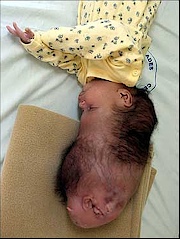 |
